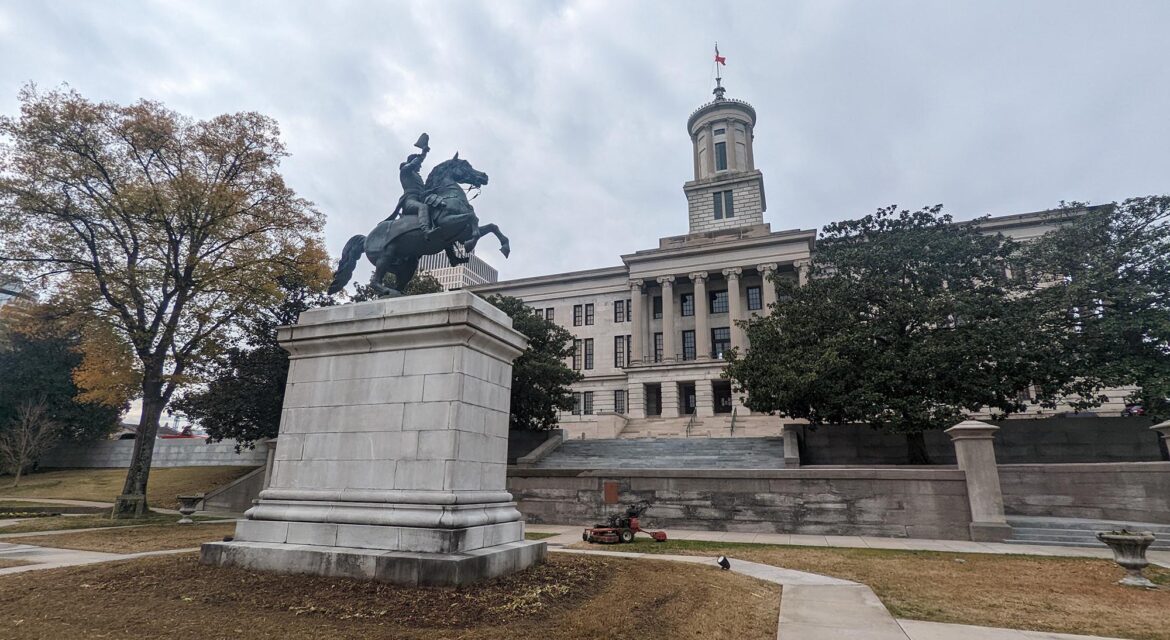 The grounds of the State Capitol in Nashville, Tennessee contain multiple monuments and statues honoring people like Sam Davis and Sgt. Alvin York as well as Presidents Andrew Jackson and Andrew Johnson. Additionally, the tomb of a President is also located on the Capitol grounds, highlighting what it can mean for a location to celebrate the legacy of a region and nation in such a profound manner.
The grounds of the State Capitol in Nashville, Tennessee contain multiple monuments and statues honoring people like Sam Davis and Sgt. Alvin York as well as Presidents Andrew Jackson and Andrew Johnson. Additionally, the tomb of a President is also located on the Capitol grounds, highlighting what it can mean for a location to celebrate the legacy of a region and nation in such a profound manner.

Honoring the People of Tennessee
 The Tennessee State Capitol was designed by William Strickland, the noted architect who was also responsible for the tower of Independence Hall. First opened in 1859, the capitol served as a fortress during the Civil War and was intended to be a tribute to the people of Tennessee. That many monuments on the grounds have realized this tribute in a way that goes beyond the capitol building itself.
The Tennessee State Capitol was designed by William Strickland, the noted architect who was also responsible for the tower of Independence Hall. First opened in 1859, the capitol served as a fortress during the Civil War and was intended to be a tribute to the people of Tennessee. That many monuments on the grounds have realized this tribute in a way that goes beyond the capitol building itself.
The tomb of the 11th United States President, James K. Polk and Mrs. James K. Polk are the most notable landmarks on the site. Polk built a successful law practice in Tennessee that he used as a platform to launch his career in politics, serving as president from 1845-1849. Originally buried at his Nashville mansion, both of the Polks were disinterred and moved to the grounds of the Tennessee State Capitol in 1893. They reside under a small stone pavilion that contains a marker that details Polk’s life and presidency.
A bronze statue of General Andrew Jackson at the Battle of New Orleans resides on the east side of the capital grounds. One of three copies, it is the first design of a person on horseback ever cast in the United States. It was dedicated during Nashville’s centennial celebration in 1880.
Statues of President Andrew Johnson, Sgt. Alvin York and Sam Davis are also located on the grounds, further connecting audiences with the legacy of the state and region. In doing so, residents and visitors can experience this history in a way that resonates across the eras.

Experiencing History
 Capital buildings are a hub of activity for cities and entire regions, but the monuments and landmarks at the Tennessee State Capitol highlight what it means to transform this activity into engagement. Doing so showcases how history and legacy can enable experiences that connect the past and present in a way that resonates with audiences and for stakeholders.
Capital buildings are a hub of activity for cities and entire regions, but the monuments and landmarks at the Tennessee State Capitol highlight what it means to transform this activity into engagement. Doing so showcases how history and legacy can enable experiences that connect the past and present in a way that resonates with audiences and for stakeholders.

